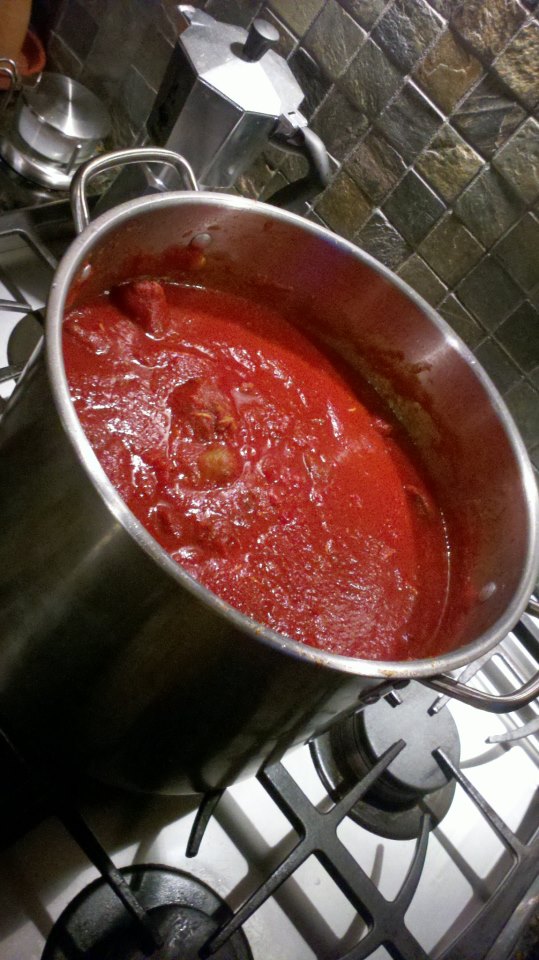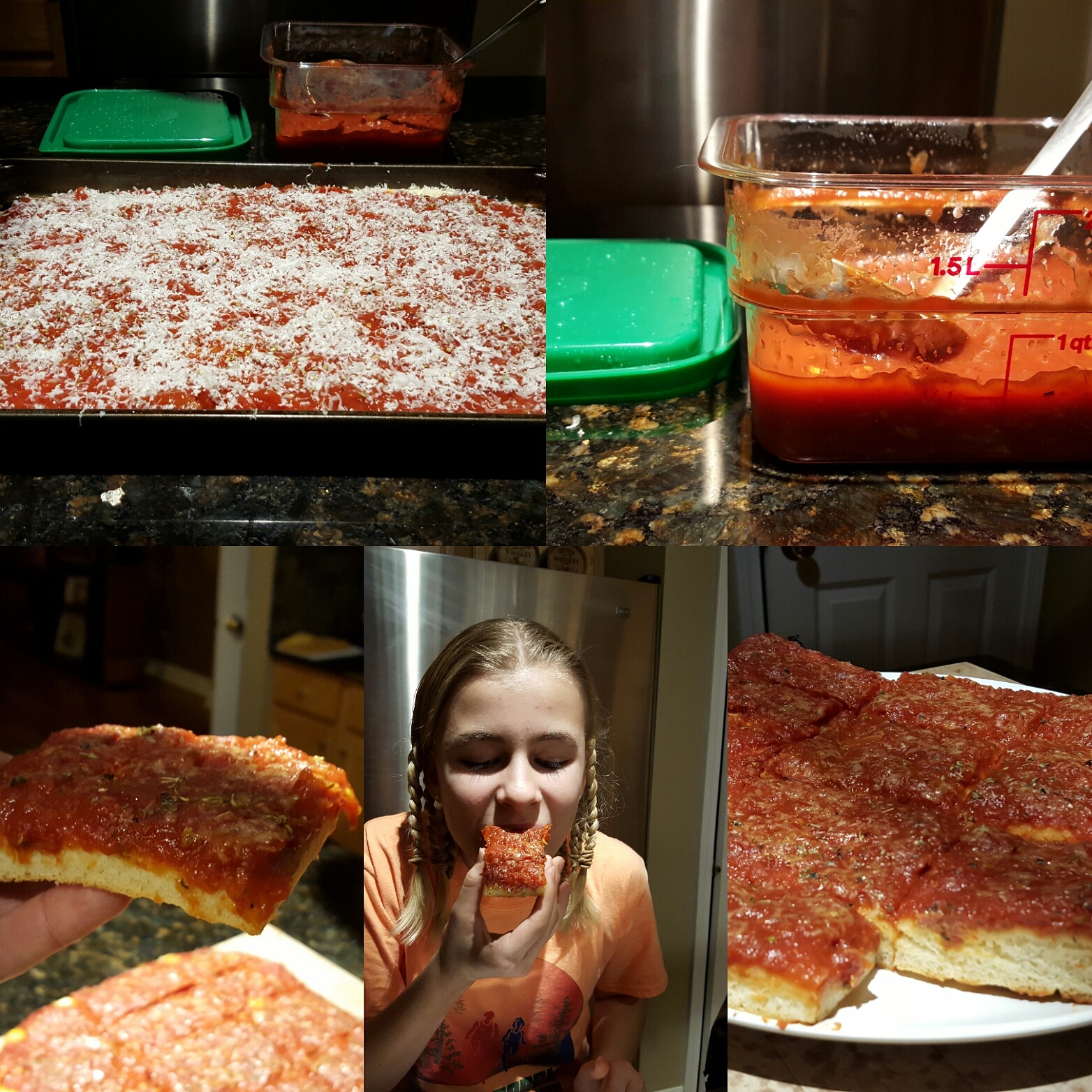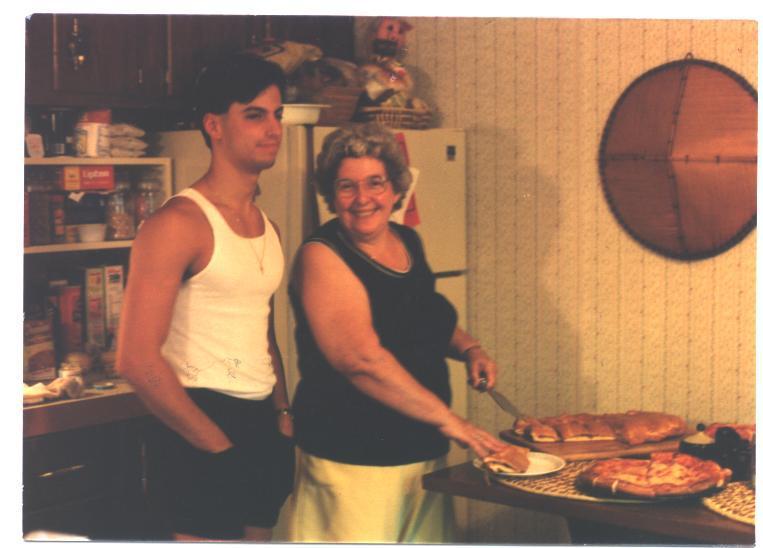You’ll find a copy of Mr. Boston Official Bartending Guide behind nearly every bar in the US. This Holy Bible of imbibing has more than 1,400 cocktail recipes. 1,400! That’s more than the number of hairs on the average middle-aged American male’s head.
It wasn’t always this way. In bygone years, one would simply order “strong drinks for men who wanna get drunk fast.” Today, however, it seems that most cocktails have 78 or 79 ingredients and are garnished with a sous vide-simmered Birch tree twig imported from the northernmost province of Finland.
It’s confusing. It’s intimidating. It’s enough to make a person just crack open a Heineken.
But is it really? Is mastering the art of the cocktail as complex as it’s now perceived?
The answer, in fact, is “No.” Like most unnecessarily complex things in life, cocktails can be broken into little pieces and re-assembled into a simplified, understandable system. And that’s what this post is all about.
In the paragraphs below, I’ll give you a template for creating both a solid foundation of classic cocktails and your own improvised riffs on those classics.
PART I: THE HOLY TRINITY OF COCKTAIL FLAVORS.
At its most basic level, cocktails are simply a mixture of whiskey, sugar, and bitters. Sure, many cocktails employ other elements. But whiskey, sugar, and bitters form the skeleton upon which the creature is built.
And when all is said and done, creating a cocktail—whether via a recipe or improvisation—is a matter of balancing three flavors: sweet, sour, and bitter. We’ll call these flavors the “Holy Trinity.”
As you’re adding an ingredient into the shaker, think about whether that ingredient will lend a sweet, sour, or bitter flavor to the cocktail. Then, think about how that flavor will be balanced against the others.
Maybe you want a balanced drink, in which all components of the Holy Trinity are in perfect harmony. Or maybe you want a cocktail that leans toward the sweet side. Or the bitter side. Keeping the Holy Trinity firmly in mind (and believe me, not everybody does) will raise the quality bar on whatever cocktail you’re building. By the way…this technique also works when cooking.
So…by now you’re thinking, “Yeah, I guess that all makes sense…conceptually. But I still don’t know how to make a damn cocktail!”
No. No you don’t. So, let me give you a template.
PART II: THE FOUR “MOTHER COCKTAILS”
A great home bartender needs a strong foundation upon which to create his liquid masterpieces. You will have that foundation if you master the four “Mother Cocktails.” They are the (a) Old Fashioned, (b) Whiskey Sour, (c) Negroni, and (d) Vodka Martini.
Master these Mother Cocktails, and you’ll have the power to create a whole slew of “Child Cocktails” by simply tweaking an ingredient here, swapping an ingredient there, and/or adding a little of this, that, or the other.
MOTHER COCKTAIL #1 (SWEET CATEGORY): THE OLD FASHIONED
The Old Fashioned is one of the oldest, simplest, and most elegant of cocktails. It’s also one of the most abused—often looking like a fruit cocktail dumped into an ice-filled glass of brown sludge. Order one in Wisconsin, and they’ll further ruin it with Sprite and Sour Mix.
Stop the insanity! A proper Old Fashioned is (surprise, surprise) nothing more than a beautiful balance of whiskey, sugar, and bitters.
OLD FASHIONED (i.e, the Sweet Mother)
4-8 parts Rye or Bourbon Whiskey
1 part Simple Syrup
2-4 dashes Angostura or Fee Brothers Old Fashioned Bitters
Stir with ice, strain into a cocktail or rocks glass, and garnish with lemon peel

There you go! The classic Old Fashioned! Now, you can spread your wings and create some sweet (in both senses of the word) “Child Cocktails.” Here’s how:
- Replace the Rye/Bourbon with Brandy, and you’ve got yourself a Brandy Old Fashioned!
- Use Peychaud’s Bitters (rather than Angostura or Fee Brothers) and strain into an Absinthe– or Pernod-coated glass. You’ve just made a Sazerac…the official cocktail of New Orleans!
- Replace the Simple Syrup with Sweet Vermouth and swap the lemon peel for a Maraschino cherry. You hold in your hand a Manhattan!
- Add 1 part Fernet Branca to the mix, and you’ll have a pleasingly bitter Toronto cocktail to keep you warm on a cold Winter night!
- Feeling a bit like a lumberjack? Well, then…replace that Simple Syrup with maple syrup and add a few dashes of Black Walnut Bitters. Your Canadian friends will weep with joy…politely, of course.
- Feeling really cocky? Good! Go into your liquor cabinet. Way in the back, where those dusty, untapped bottles of strange stuff have been banished. What do you have there? Some funky Italian Amaro? A bottle of Nocino, Frangelico, or Amaretto? Some crazy German liquor that you can neither read nor pronounce? A collection of unconventionally-flavored Bitters, like Aztec Chocolate, Rhubarb, or Cherry? Pull them out, take a sniff, have a taste…and think. Would a spoonful of one or a dash of the other lift Mother to an even higher plateau? If you think so, then give it go.
MOTHER COCKTAIL #2 (SOUR CATEGORY): THE WHISKEY SOUR
Whiskey Sour is that cocktail that your grandfather let you sip on the sly during some family function in 1975. You were only eight years old, but you liked it.
When made correctly, a Whiskey Sour tastes great on a hot day and—as with the Old Fashioned—is the Mother Cocktail from whose loins a number of sour Children may spring.
WHISKEY SOUR (i.e, the Sour Mother)
4-8 parts Rye or Bourbon Whiskey
2 parts freshly squeezed lemon juice
1 part Simple Syrup
Shake with ice, strain into a cocktail or rocks glass.

That’s the Mother. Here are her Children:
- Vigorously dry shake 1 egg white before adding the other ingredients, and you’ll have a thicker, creamier, frothy Whiskey Sour.
- Replace the Rye/Bourbon with Brandy, replace the Simple Syrup with Cointreau or Triple Sec, serve in a sugar-rimmed glass, and garnish with lemon peel. You’ve just made a Sidecar!
- Replace the Whiskey with Tequila, the lemon juice with lime juice, the Simple Syrup with Cointreau or Triple Sec, and serve in a salt-rimmed glass. Guess what? Tu tienes una Margarita!
- Replace the Whiskey with White Rum and the lemon with lime juice. You be drinkin’ a Daquiri, mahn! No blender required…or welcomed!
Do you see how easy this is? Let’s continue!
MOTHER COCKTAIL #3 (BITTER CATEGORY): THE NEGRONI
I was sitting in a bar in southern Italy around noontime in 2003, and noticed that most of the men were sipping a very pretty, intensely red drink. I asked the bartender what it was. He proudly informed, “Il Negroni!”
Negroni is a bracingly bitter cocktail that’s often drunk as an aperitif. It’s not always love at first sip. Acquiring the taste may take a few tries. But once you’ve acquired it, you’ll be in love forever.
And man-oh-man, is it easy to make!
NEGRONI (i.e, the Bitter Mother)
1 part Campari
1 part Sweet Vermouth
1 part Gin
Stir with ice, strain into a cocktail or rocks glass, and garnish with orange peel.

Mother, meet your Children:
- Replace Campari with Aperol, and you’ll have a lighter, more citrusy, less bitter riff on the Negroni.
- Replace the Gin with Rye Whiskey or Bourbon, and you’ll have a Boulevardier—Negroni’s tastier, more rugged offspring.
- Replace the Gin with Spiced Rum, and you’ll be sipping a Kingston.
MOTHER COCKTAIL #4 (NEUTRAL CATEGORY): THE VODKA MARTINI
And then there are those times—or those guests—that are just not up for adventure. You’re feeling bland….non-committal…neutral. And you want a cocktail that will taste great, but won’t challenge you. Who you gonna call?
“Martini. Vodka Martini.”
VODKA MARTINI (i.e, the Neutral Mother)
2-4 parts Vodka
1 part Dry Vermouth
Stir with ice, strain into a cocktail glass, and garnish with three green olives.

Even the Plain Jane Vodka Martini got knocked-up:
- For a Dry Martini, change the Vodka to Vermouth ratio to 6:1. Or, in more extreme cases, simply coat your glass with Vermouth and fill it with ice cold Vodka. Worst case scenario: Just pour a friggin’ glass of cold Vodka.
- Prefer a brighter, less pungent Martini? Skip the olives and instead garnish with lemon peel.
- Feeling grown-up? Replace Vodka with Gin for a more complex, herbacious Martini.
- Swap the olives for cocktail onions, and your Martini will become a Gibson. A couple dashes of Celery Bitters will make it better still.
- Swap green olives for black olives, and your Martini is now called a Buckeye.
- Change the proportions to 6 parts Gin, 2 parts Vodka, 1 part Lillet Blanc, and then garnish with lemon peel. You’ve just made a Vesper.
PART III: PUTTING IT ALL TOGETHER
You now have the tools to be a fisherman, rather than a fish eater. Congratulations.
But your newly acquired, mad mixology skills cannot be kept quiet. They must be shared with—and shown off to—friends and family. At least, to those friends and family that agree to use Uber.
So, throw a party. Host a get-together. And when an indecisive guest hems and haws over what to order, try the following line of questioning:
Q1: Do you want something sweet, sour, bitter, or neutral?
Q2: Do you tend to prefer brown liquors or white liquors?
Q3: Do you like drinks with simple flavors, or complex?
Q4: Which type of complexity do you like most? Citrusy? Fruity? Winey? Herbacious? Nutty? Spicy? Salty? Smoky?
If (for example) the guest answers, “I want a neutral, white cocktail with simple, citrusy flavors,” then you’ll want to make a Vodka Martini with a twist of lemon peel.
If she answers, “I want a bitter, brown cocktail with complex, spicy flavors,” then she’d probably appreciate a well-made Kingston.
If he answers, “Gimme a sweet, brown cocktail that’s complex and winey,” then that dude needs a Manhattan.
If she gushes, “I’d love a sour, white cocktail that’s salty and smokey,” then duuuuuh! Hola, Margarita!
PART IV: FINAL THOUGHTS
In the end, the precise recipe for a cocktail isn’t the most important thing. It’s the care that you use when making the cocktail itself. Listed below are some nuggets of wisdom that I’ve amassed during years of research, self-destruction, and tinkering at my kitchen island:
- The simpler the cocktail, the more important the quality of your base liquor. An expensive Rye Whiskey works wonders in an Old Fashioned, but would be wasted in a Boulevardier.
- Fill your cocktail or rocks glass with ice water before you start mixing the cocktail. That glass will be good and cold by the time you are ready to pour.
- A cocktail has two mortal enemies: (a) warmth, and (b) water. So, add your ingredients to the shaker first. Add the ice last. Once you are done shaking or stirring, don’t let it sit on the counter while the ice continues to melt. Immediately strain that drink into your chilled cocktail or rocks glass.
- If your cocktail contains fruit juice, then it should be shaken. If it doesn’t, then it should be stirred. Sorry, 007…but you’ve been doing all wrong. Stirring assures a crystal clear, ice shard-free cocktail. The only exception is the Bloody Mary (which should be “rolled”), but that’s a topic for another day.
- Wisconsin, take note! Fruit juices should be freshly squeezed to order. Never use bottled juices or (god forbid) “Sour Mix.”
- Don’t ever buy Simple Syrup! It’s a waste of money. You can make it yourself for mere pennies in five minutes. Just bring one cup of water to a boil, dissolve one cup of sugar into it, let it cool, and you’ve got Simple Syrup.
- I prefer cocktails served up, rather than on the rocks. But if you take a cocktail on the rocks, then you want just one, very large ice cube or sphere—not a glass full of small ice cubes that will start melting before your first sip.
- When garnishing with lemon, lime, or orange peel, express the oils over the surface of the cocktail, rub the peel two revolutions around the rim of the glass, then drop it into the drink. That peel should have no pith or pulp on the underside.
- Not all cherries are created equal. Avoid those nuclear red sugar bombs found on supermarket shelves, and shell out the cash for a jar of Luxardo Maraschino or Griottines Morello cherries (i.e., the real thing!). The difference will be both mind-blowing and life-changing.
- Rather than dealing with jiggers and ponies, buy an OXO Good Grips Mini Angled Measuring Cup. Measuring out liquors is faster, easier, and more precise with one of these. And they’re cheap!
- A great source of quality, reasonably price bar ware is Cocktail Kingdom.
- I recommend the following four books for your home cocktail library: Mr. Boston; The Bar Book: Elements of Cocktail Technique by Jeffrey Morgenthaler; The PDT Cocktail Book by Jim Meehan; and Bitters by Brad Thomas Parsons.
- To stay on the cutting edge of cocktail culture, a subscription to Imbibe Magazine is a must.
- The recipes above that I give for Mother Cocktails are written in proportions. Converting these to ounces or milliliters is easy, even for a math-phobe like me. The formula is as follows:
(# of parts liquor at issue/Total # of parts all liquors) * Total size of the cocktail (in either ounces or milliliters) = Amount of the liquor at issue (in ounces or milliliters) that you’ll need to add
Example:
If a Whiskey Sour is 4:2:1 parts Whiskey to Lemon Juice to Simple Syrup and you want to make a 4 ounce drink, then you would add:
(4/(4+2+1) = .57*4oz = 2.28 oz Whiskey
(2/(4+2+1) = .29*4oz = 1.16 oz Lemon Juice
(1/(4+2+1) = .14*4oz + .56 oz Simple Syrup
Feel free to round up or down. Even the OXO Measuring Cup isn’t that precise.
- There are bars and restaurants that pride themselves on serving cocktails as big as a human head. This is unconscionable…and it hurts. A cocktail should not exceed 4 ounces in total. Or, as the kids say, #NoMoreThan4! Your cocktail will remain chilled to the last sip, you’ll have a realistic possibility of having a second one, and most importantly…you’ll thank me in the morning.
In the end, cocktailing isn’t rocket science. Hell, it isn’t even science. It’s art. No cocktail recipe—regardless of how long-standing or generally accepted—is gospel. If you have a cocktail recipe that you like, keep tweaking it until it becomes one that you love.
Then, share the love. You now have the skills to do it, and do it well.

























